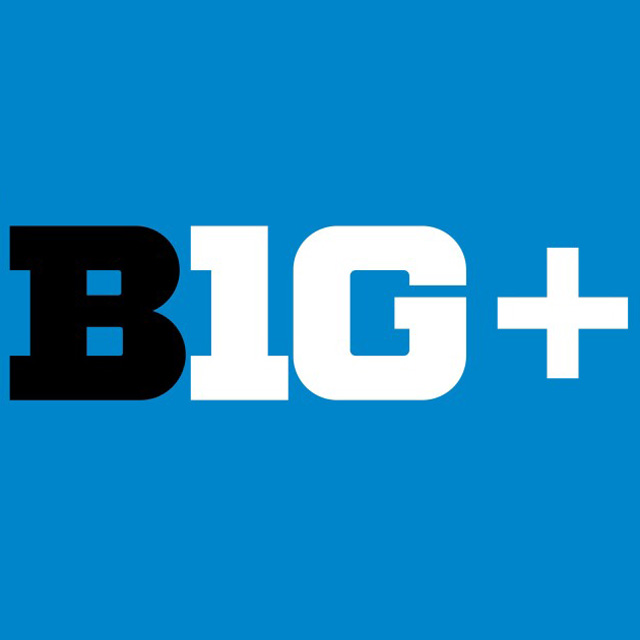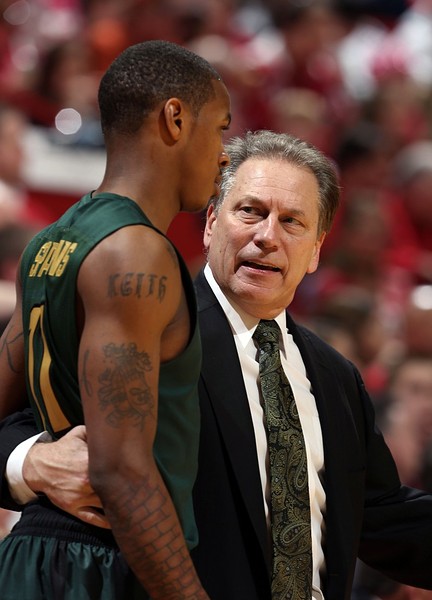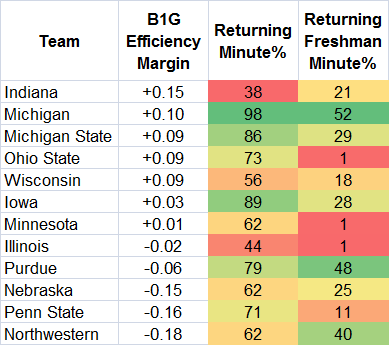BTN.com staff, April 12, 2013
We're now officially in the college basketball offseason, a long seven months where the NBA playoffs, major league baseball, and eventually football serve as poor stand-ins for our sports attention. But before we shift into that fruitless exercise, let's take a quick look at what awaits us beyond the gap.
While these numbers will likely change over the next week (especially for Michigan), here's a current summary of what each team returns for 2013-14:
With these numbers in mind, here's a few thoughts on each team:
- Indiana will take a major drop, but it helps to drop from such a lofty perch. The Hoosiers were well clear of the field in terms of efficiency margin, and they do return a solid amount of freshman-to-sophomore minutes. Something not captured in this table is the quality of the incoming 2013 recruiting class, and Tom Crean has a very good one lined up, headed by 5-star power forward Noah Vonleh. Indiana does not figure to be a national title contender again, but there will be plenty of talent on hand.
- Michigan looks incredible at the moment and would be the clear favorite, but I'd be shocked if those returning numbers didn't drop precipitously in the coming week. For reference, the returning minutes number could drop as low as 36 percent if all four of the possible NBA early entrants decide to leave (Trey Burke, Tim Hardaway Jr., Mitch McGary, and Glenn Robinson III). The Wolverines do have a good recruiting class coming in, but it clearly wouldn't be enough to fully replace those four players. Stay tuned.
- Michigan State seems like the early favorite for the 2013-14 Big Ten title. The Spartans figure to return more than anybody but Iowa, plus they have a prime Sophomore Leap candidate in Denzel Valentine. If Adreian Payne and Gary Harris do indeed stick around, Tom Izzo's squad should be top five in preseason polls and could be the conference's only true national title contender.
- Ohio State loses some major production in Deshaun Thomas, and it's hard to see the offense being as good without him, but that defense could be incredible. I'll expect a small step back for the Buckeyes, but this should still be a solid NCAA tournament team.
- Wisconsin loses a lot of frontcourt minutes from Ryan Evans, Jared Berggren, and Mike Bruesewitz, so the defense likely suffers. The return of Josh Gasser and an expected Sophomore Leap from Sam Dekker should bring the Badgers back to what they usually are under Bo Ryan–a highly-efficient offensive team that gets mistaken for a great defensive team due to its slow pace. As usual, it won't be smart to pick the Badgers to miss the NCAA tournament.
- Iowa is a very interesting case. The Hawkeyes will likely return the most minutes in the conference, and they were already quite solid by efficiency margin. Still, the gap between Iowa and the conference's top five was quite large, so it's not a given that the Hawkeyes will be able to climb into that group. The best reason to hope for an upper half finish is a trio of Sophomore Leap candidates in Mike Gesell, Adam Woodbury, and Anthony Clemmons. Iowa managed to have a decent Big Ten offense while shooting terribly (28 percent on threes, 45 percent on twos). There's certainly room for improvement, and anything less than an NCAA tournament bid would be a big disappointment.
- Minnesota is in better shape than most teams coming off a coaching change, but those returning numbers indicate a team that probably takes a small step back. It remains to be seen how new coach Richard Pitino's style will meld with this roster, but he's at least got a talented backcourt with which to work (Andre Hollins, Austin Hollins, and Joe Coleman). The frontcourt is a major question mark, and I'd be surprised to see the Gophers put up a winning Big Ten record in year one of the Pitino era.
- Illinois is arguably the most decimated team in the conference. Indiana loses more minutes, but the Hoosiers at least have some returning freshmen to provide a boost. The Illini have no such luxury. Illinois brings back just four players with any experience, so it would make sense for those players and Drake transfer Rayvonte Rice to comprise the starting five. All depth will be provided by a solid recruiting class, but we all know that it's perilous to count on non-elite freshmen. After a successful first season, John Groce may have to take some lumps in year two as he rebuilds the roster, as every team that finished behind the Illini in efficiency margin should be improved. A last place finish might be as likely as an NCAA tournament bid, but Illinois should be back in 2014-15.
- Purdue is a prime candidate for improvement. Not only do the Boilers bring back the bulk of their rotation, they also return four freshmen that played significant minutes. Purdue should get back to being an NCAA tournament team in 2013-14, and things will only get better from there with the maturation of a good 2013 freshman class. Matt Painter's period of lackluster recruiting manifested itself in 2012-13, but it should be awhile before the Boilers have another season like that.
- Nebraska loses a fair amount from a bad team, but there's enough returning freshman minutes to hope for a small improvement. Shavon Shields figures to take over as the face of the program, and it's up to Tim Miles to surround him with better talent in Lincoln. The Huskers could be better and still finish in last place with the bottom of the conference improving.
- Penn State should be much more competitive next season with the return of Tim Frazier, but forecasts of an NCAA tournament team may be overly optimistic. The backcourt should be quite good between Frazier, a lower-usage D.J. Newbill, Jermaine Marshall, and Pitt transfer John Johnson (eligible mid-December), but the frontcourt will still be woeful. The Nittany Lions will be much improved, but I wouldn't go making March plans just yet.
- Northwestern also welcomes a new coach in Chris Collins, and he should have an intriguing roster with which to work. Drew Crawford and JerShon Cobb return to the fray, and a collection of returning freshmen could become solid regulars, led by Tre Demps and Alex Olah. This probably won't be a good team, but the Wildcats should finish solidly in the nation's top 100.
It seems clear that the Big Ten will have more parity next season, as the four worst teams get a lot better and the two best teams get a bit worse. We might see something akin to the Big Ten of 2010-11, when only three teams got top-4 NCAA seeds but four others made the tournament, and no team was truly awful. It could be even more difficult than normal to pick up Big Ten road wins.
Of course, we still have to pass an entire offseason before we make our real predictions, and things tend to shift over the summer, especially with the advent of fifth-year transfers. We'll be watching attentively, waiting for autumn to bring our beloved game back to us. Until then, have a great summer.







 WATCH LIVE: Conference tennis championships for men and women.
WATCH LIVE: Conference tennis championships for men and women. 
